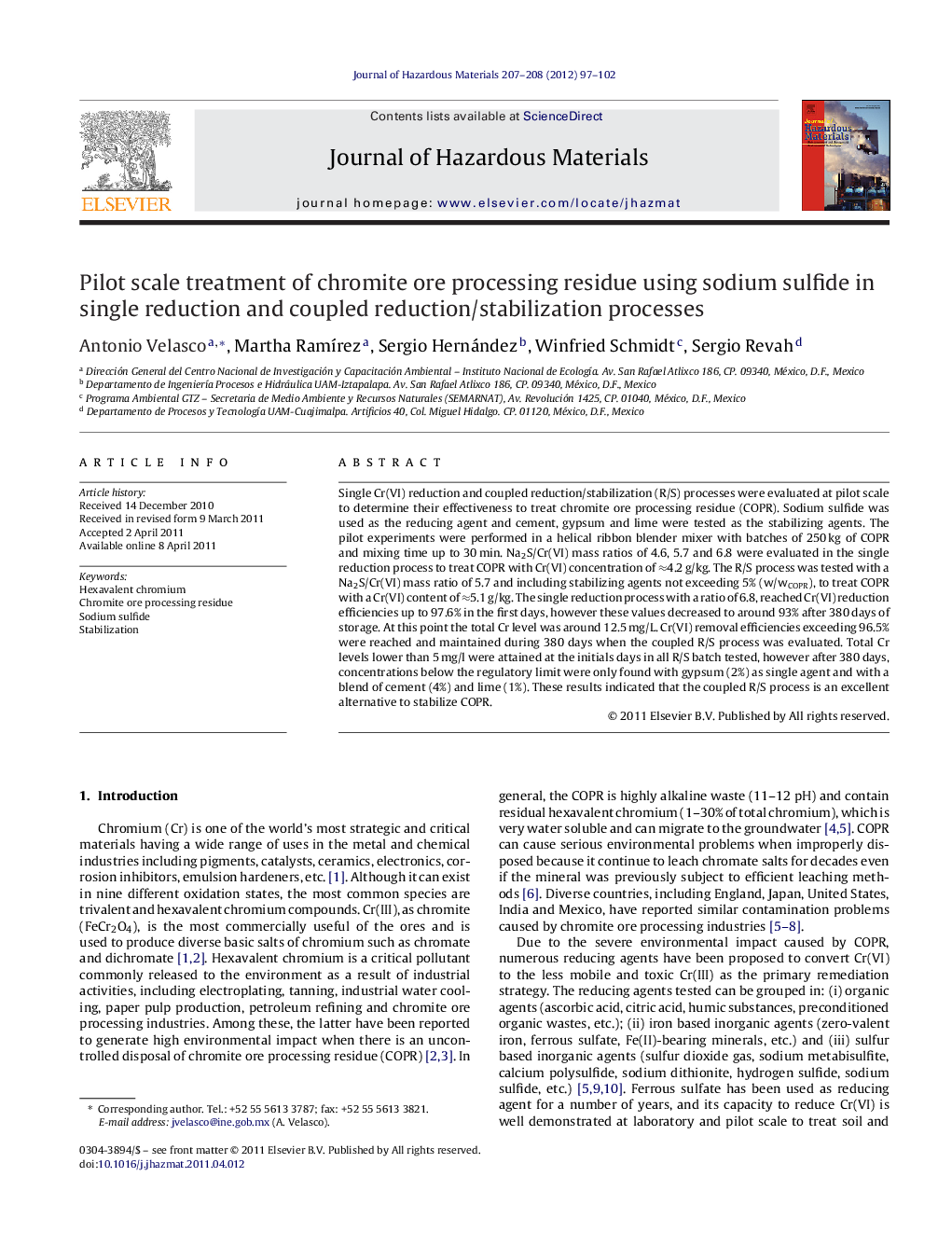| Article ID | Journal | Published Year | Pages | File Type |
|---|---|---|---|---|
| 578424 | Journal of Hazardous Materials | 2012 | 6 Pages |
Abstract
Single Cr(VI) reduction and coupled reduction/stabilization (R/S) processes were evaluated at pilot scale to determine their effectiveness to treat chromite ore processing residue (COPR). Sodium sulfide was used as the reducing agent and cement, gypsum and lime were tested as the stabilizing agents. The pilot experiments were performed in a helical ribbon blender mixer with batches of 250Â kg of COPR and mixing time up to 30Â min. Na2S/Cr(VI) mass ratios of 4.6, 5.7 and 6.8 were evaluated in the single reduction process to treat COPR with Cr(VI) concentration of â4.2Â g/kg. The R/S process was tested with a Na2S/Cr(VI) mass ratio of 5.7 and including stabilizing agents not exceeding 5% (w/wCOPR), to treat COPR with a Cr(VI) content of â5.1Â g/kg. The single reduction process with a ratio of 6.8, reached Cr(VI) reduction efficiencies up to 97.6% in the first days, however these values decreased to around 93% after 380 days of storage. At this point the total Cr level was around 12.5Â mg/L. Cr(VI) removal efficiencies exceeding 96.5% were reached and maintained during 380 days when the coupled R/S process was evaluated. Total Cr levels lower than 5Â mg/l were attained at the initials days in all R/S batch tested, however after 380 days, concentrations below the regulatory limit were only found with gypsum (2%) as single agent and with a blend of cement (4%) and lime (1%). These results indicated that the coupled R/S process is an excellent alternative to stabilize COPR.
Related Topics
Physical Sciences and Engineering
Chemical Engineering
Chemical Health and Safety
Authors
Antonio Velasco, Martha RamÃrez, Sergio Hernández, Winfried Schmidt, Sergio Revah,
